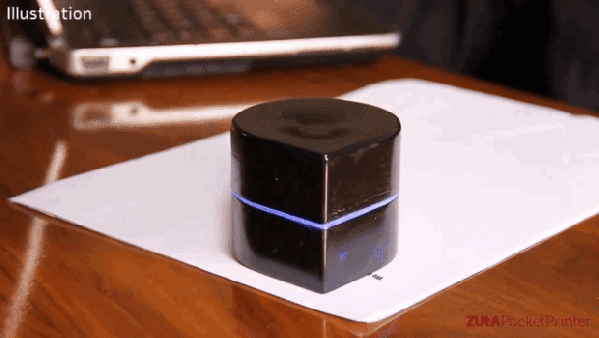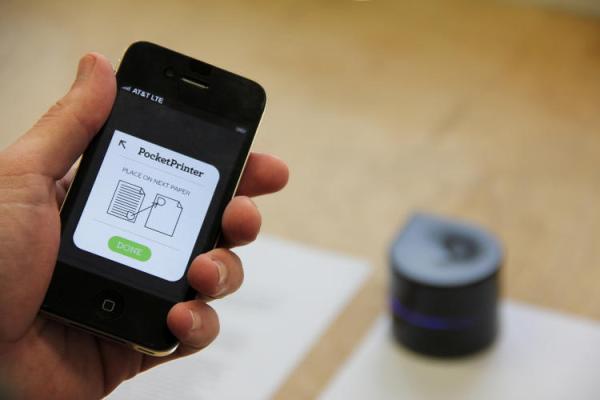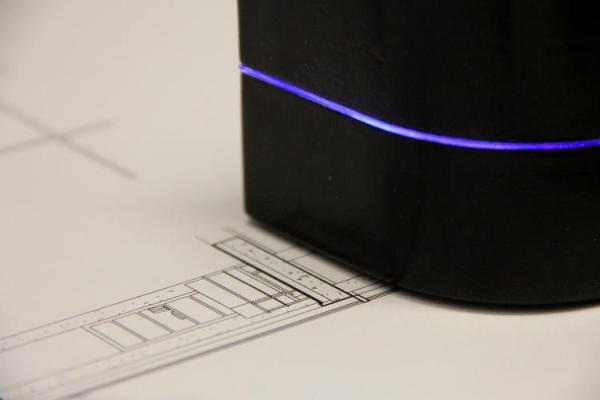After raising almost $600,000 on Kickstarter, Zuta Labs is ready to start production on the printer and is accepting pre-orders from non-Kickstarter backers.
The pre-order price — which Zuta Labs says will be lower than the cost at launch — is $199.99. The printer is available in white and black. It comes with a print cartridge that is good for at least 100 pages. Additional cartridges are available for pre-order.
The wireless printer works for about an hour and is rechargeable via micro USB. Users can print on all sizes of paper and it works without drivers and can print from Macs, PCs iOS and Android.
Since its Kickstarter period, Zuta Labs says it has managed to make the printer smaller and faster than it originally anticipated.
The size — just 10.2 centimeters in diameter — is a big selling point for the product. It is aimed at users who only need a printer infrequently and in places where traditional access — think a coffee shop or at a hotel — is not always applicable. The fact that it also works with smartphones and tablets is a big deal, too. More often than not, I wind up needing to print documents from my phone more than my laptop.
Zuta Labs is aiming to have the Zuta Pocket Printer shipped by September 2015. The company is at CES 2015 showing off demos of the device and taking meetings with potential partners.








